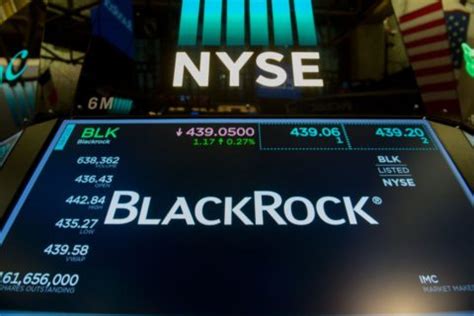
Just 3 Companies Are Leading The Charge In The Marxist Takeover Of America
Story by Gage Klipper
For nearly nine out of 10 companies listed on the S&P 500 stock exchange, their largest single shareholder is one of the “Big Three” investment firms: BlackRock, Vanguard, and State Street. Managing more money than most small countries, these firms have an invisible foothold in virtually every sector of American society. But how did these paragons of capitalism turn into a Marxist Trojan Horse?
Two trends emerged in the aftermath of the 2008 financial crisis. One was a new type of investment that concentrated capital among a small number of firms. The other was left-wing activism in the style of Occupy Wall Street. Combined, these trends helped empower three firms to push much of the corporate wokeness that is so common today.
The financial meltdown precipitated a transition from active to passive investment. Active investment is what one typically thinks of as investing — making risky stock purchases in an attempt to beat the market in the short-term. Passive investment, on the other hand, requires much less effort. According to Investopedia, it is a long-term strategy where investors try to “replicate market performance by constructing well-diversified portfolios” (e.g. mutual funds) typically based on a “representative benchmark” like the S&P 500 index. In other words, it bets on the market rather than against it.
Passive investing took off after the financial crisis when investors realized it wasn’t worth trying to beat the market. Why pay a broker a one to two percent fee every year to actively manage your assets, especially when the downturn revealed they often under-performed the regular market returns? Many opted for passive asset management that cost a fraction of a brokerage fee.
One study found that between 2008 and 2015, active funds lost $800 billion while passive funds gained over $1 trillion in new investment. As of 2019, more money is now invested in passive than in active funds.
This empowered the rise of the Big Three firms, which all specialize in passive asset management. Combined, the three firms have a total of $22 trillion in assets under management, much of which comes from large institutional investors like pension funds.
These firms invest in passive index funds on behalf of their clients, but the sheer volume has allowed them to become major shareholders in nearly all public American companies. With this comes out-sized voting power on corporate boards.
At the same time passive investing took off, social leftism was escaping from college campuses into the real world.
Occupy Wall Street represented legitimate outrage against the wild mismanagement of Wall Street finance. However, what started out as an ostensibly class-based protest quickly devolved into dysfunctional identity politics.
As one former Occupy protester reflected, the movement “fell apart largely because of the endless bifurcation of members’ agendas. Whenever a task force of leading members was proposed to discuss some almost-consensus working-class issue like support for an increased minimum wage, the call would immediately come for a women’s task force. Then, what about a Black women’s task force? A Black gay women’s task force? Very often, 37 quarreling proposals about what to do would eventually be made, and nothing would ever get done.”
Occupy provided its own foil for elites to replicate. The best way to neuter a class-based revolution is to divide the middle and working classes into factions, and have them fight among each other rather than unite against the financial and political elites. Identity politics — what’s really just American Marxism — became a sure-fire way to insulate elite power.
Like Marxism, identity politics pits victim against oppressor, except in the American case it is based on racial categories rather than economic class. The Big Three weaponize the framework of Marxism to keep the lower classes occupied without actually having to give up any of their power or wealth.
Thus, it’s not surprising that the Big Three have used their shareholder power to impose an Environmental Social Governance (ESG) agenda on corporate America that makes companies bend the knee to identity politics. The “E” focuses on climate issues and supposed externalities; the “S” factors in identity concerns like diversity and inclusion; and the “G” requires structuring corporate leadership to reflect the previous two components. If companies want to be included in vaunted ESG funds, they must meet the often arbitrary benchmarks.
Just one of many egregious examples shows how this scheme plays out in practice.
After George Floyd’s death, BlackRock decided it wanted all the companies it invests in to put greater effort into diversity and inclusion. They forced American companies to disclose the “racial, ethnic and gender makeup of their employees.” This was then used as a benchmark to force companies to re-make their boards of directors so that the “board’s composition reflects . . . the diversity of the company’s key stakeholders.” BlackRock pledged to vote against any directors who refused to do so.
At virtually the same time, Vanguard and State Street imposed similar diversity mandates across their portfolios, making it near impossible for companies to avoid. The number of companies now releasing their diversity data tripled in the year after the new requirements were imposed.
This formula has been replicated on numerous left-wing priorities. Additionally, as industry leaders, the Big Three serve as respectable actors for smaller firms to emulate — even those they lack the direct power to coerce.
Elites like BlackRock’s CEO Larry Fink have recently attempted to distance themselves from the ESG name and the “woke” connotation it now carries. However, don’t be fooled — ESG by any other name is just as destructive.

Comments (0)